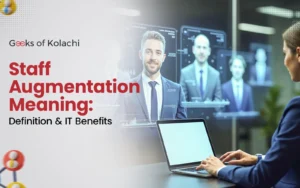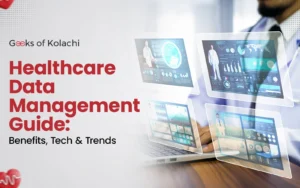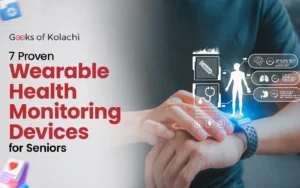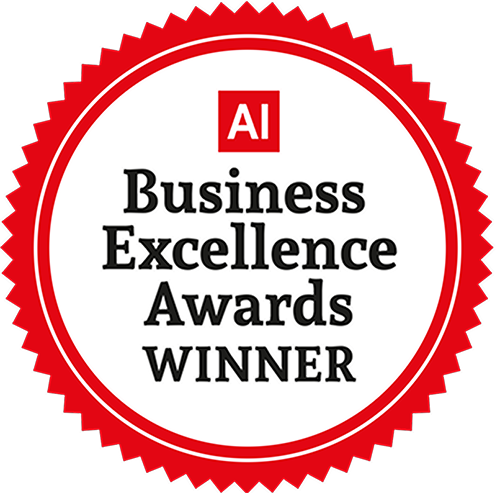
How Voice Technology in Healthcare Enhances Patient Experience and Boosts Clinical Efficiency
In the dynamic world of healthcare, technology plays a crucial role in enhancing both patient care and operational efficiency. Among the many innovations, voice technology in healthcare stands out as a game changer. It enables healthcare providers to interact with electronic systems using natural speech, making documentation, data retrieval, and patient communication faster and more efficient. This blog explores how voice technology in healthcare is revolutionizing clinical workflows while significantly improving patient experience.
Understanding the Rise of Voice Technology in Healthcare
Traditionally, medical professionals spent a significant portion of their day navigating cumbersome electronic health record (EHR) systems using keyboards and mice. This approach, although necessary, introduced inefficiencies, from slower data entry to disrupted patient interactions. Today, voice recognition technology in healthcare offers an alternative that promises to reduce these burdens.
By converting spoken words into accurate, searchable digital text, medical voice recognition systems streamline documentation processes. This transformation not only accelerates data entry but also allows clinicians to focus on what matters most—the patient. In fact, the advent of voice activated software tailored for healthcare environments means providers can use voice commands to access patient charts, update records, and even navigate complex interfaces hands-free.
The future of voice recognition in healthcare is being shaped by such innovations, making healthcare delivery more responsive, scalable, and patient-friendly.
Forward-thinking organizations are already enhancing their systems through comprehensive software development services that integrate voice and AI technologies seamlessly into existing medical workflows.
How Voice Technology Elevates Patient Experience
The most immediate benefit of adopting voice technology in healthcare is the enhancement of patient-provider communication. When clinicians rely less on typing and more on speaking naturally, consultations become more personal and interactive.
Providers can engage patients with increased eye contact and active listening, creating an environment where patients feel truly heard and valued. The ability to dictate notes on the spot reduces the need for providers to divert attention to data entry tasks, fostering a better connection during visits.
Moreover, voice-driven tools improve accessibility for patients. Devices equipped with HIPAA compliant voice recorders or voice to text medical applications enable patients, especially those with limited mobility or chronic illnesses, to manage appointments, access records, and communicate symptoms remotely and securely. This convenience enhances patient satisfaction by providing healthcare that is both approachable and responsive.
As explained in Holon Solutions’ insights on how voice tools empower patients and clinicians, these technologies are making care delivery more inclusive and intuitive.
Boosting Clinical Efficiency with Voice-Driven Solutions
The administrative demands on healthcare professionals are immense. Documentation, scheduling, and data retrieval consume valuable time and resources. However, voice technologies are helping to lighten this load.
With medical speech recognition platforms integrated into healthcare systems, clinicians can dictate detailed patient notes swiftly and with high accuracy. This not only cuts down on transcription time but also reduces the risk of errors often found in manual typing or handwritten records.
One of the key drivers of efficiency is the integration of voice recognition software with EHRs. This integration allows healthcare providers to use voice commands to perform complex tasks, such as pulling up patient histories or entering medication orders, without leaving the patient’s side. It creates a more fluid workflow that balances technology use with patient care.
Healthcare providers often benefit from custom healthcare software development services that tailor voice tech features to their specific clinical environment, ensuring smoother adoption and a more intuitive user experience.
In addition, electronic transcription powered by voice tools supports faster turnaround for clinical documents, ensuring that up-to-date information is available to all members of the care team in real-time. The result is a healthcare system that is better coordinated and more responsive.
Emerging Trends: AI, Security, and Patient-Centric Innovations
The evolution of voice technology in healthcare is deeply intertwined with advances in artificial intelligence (AI). Today’s voice AI in healthcare leverages machine learning and natural language processing to comprehend complex medical terminologies and context more effectively than ever before.
As a result, modern medical voice recognition systems are achieving accuracy rates close to human transcriptionists, with reduced need for extensive user training. AI-driven voice assistants can now support clinicians by not only transcribing notes but also offering decision support, reminders, and alerts during patient care.
Security and compliance remain top priorities. The use of HIPAA compliant speech to text systems ensures that patient data is handled according to strict privacy regulations. These secure solutions mitigate risks associated with cloud-based processing by encrypting data and restricting access to authorized personnel only.
On the patient side, emerging voice-enabled applications allow for hands-free control over health management tasks. From voice-controlled medication reminders to virtual check-ins, patients experience a more intuitive, accessible approach to their healthcare journey.
As highlighted by Launch Consulting, next-generation voice assistants in healthcare are reshaping how AI and speech technologies are used for more emotionally aware and efficient care delivery.
These developments also tie into the latest trends in medical app development, where voice and AI technologies are being baked into mobile health tools to support everything from prescription delivery to chronic care monitoring.
Real-World Applications and Benefits
Healthcare organizations are increasingly adopting medical voice technology tools for a range of applications beyond documentation:
- In surgical suites, voice commands can adjust equipment without breaking sterile fields, enhancing procedural efficiency.
- Nurses use voice macros to quickly retrieve patient information such as allergies or medication history, improving response times.
- Telehealth platforms incorporate voice to text medical transcription to capture accurate remote consultation records, making virtual visits as reliable as in-person appointments.
These innovations collectively reduce clinician burnout, improve data accuracy, and help healthcare providers spend more quality time with patients.
Challenges and Future Directions
Despite the clear benefits, the adoption of voice technology in healthcare faces several challenges. Accuracy can be affected by accents, background noise, or overlapping conversations. While AI is improving, providers may still need to review and correct transcriptions to avoid clinical errors.
Privacy concerns also loom large. Even with HIPAA compliant voice recorders and speech-to-text systems, healthcare organizations must remain vigilant to protect sensitive patient information, especially when leveraging cloud-based voice processing.
User acceptance is another hurdle. Transitioning to voice interfaces requires training and adjustments to workflow habits. Successful implementation depends on involving clinicians early in the process and providing ongoing support.
The benefits and challenges of speech recognition systems are thoroughly explored in this in-depth guide from Mariana AI, offering a balanced view on how to navigate the limitations while embracing the opportunities.
Looking ahead, the future of such voice technologies is promising. Continued AI advancements will enable more natural, conversational interactions with EHRs and other medical systems. Integration with wearable devices and IoT (Internet of Things) will offer real-time voice-enabled monitoring and care delivery. As these technologies mature, we can expect them to become an indispensable part of healthcare.
Conclusion:
The integration of voice technology in healthcare is reshaping how medical professionals and patients interact with healthcare systems. It enhances patient experience by promoting more personal communication and better accessibility, while simultaneously boosting clinical efficiency by streamlining documentation and administrative tasks.
By embracing voice technologies in the healthcare management sector, the medical community is poised to deliver safer, faster, and more patient-centered care. While challenges around accuracy and privacy remain, the ongoing innovation in this space promises a future where voice is a primary interface for healthcare delivery — making healthcare more efficient and human than ever before.
Frequently Asked Questions
1. What is voice technology in healthcare?
Voice technology in healthcare refers to the use of voice recognition and artificial intelligence (AI) to enable medical professionals to interact with systems through speech. It supports hands-free documentation, access to electronic health records (EHRs), and patient communication.
2. How does voice technology improve patient care?
Voice commands reduce screen time, letting clinicians focus on patients. This leads to better engagement, more accurate documentation, and a more personalized care experience.
3. How does voice technology integrate with Electronic Health Records (EHRs)?
Voice technology allows clinicians to dictate notes, pull up patient histories, and update records using speech. This improves workflow efficiency and reduces time spent on manual data entry.
4. Is voice technology secure in healthcare settings?
Yes. When HIPAA-compliant platforms are used, voice data is encrypted and protected. Regular audits and access controls ensure patient privacy.
5. Can voice technology understand different accents and dialects?
Modern voice recognition systems use AI and machine learning to understand diverse accents and speech patterns with high accuracy.
6. What are the benefits of voice technology for patients with disabilities?
Voice-enabled tools support patients with mobility or vision challenges by offering hands-free access to healthcare services, such as appointment booking and symptom reporting.
7. Can voice recognition software accurately understand medical terminology?
Yes. Most modern systems are trained on clinical language and can transcribe complex medical terminology accurately.
8. How does voice technology impact clinician burnout?
By automating documentation and reducing admin work, voice tech frees up time for patient care—helping to lower stress and burnout among clinicians.
9. What are the limitations or challenges of using voice technology in healthcare?
Challenges include background noise, speech overlap, training needs, and data security concerns. However, ongoing AI advancements are steadily improving these areas.
10. What real-world examples exist of voice technology being used in healthcare?
-
Surgeons use voice to control equipment hands-free.
-
Nurses retrieve patient data using voice macros.
-
Telehealth systems auto-transcribe remote consultations.



















